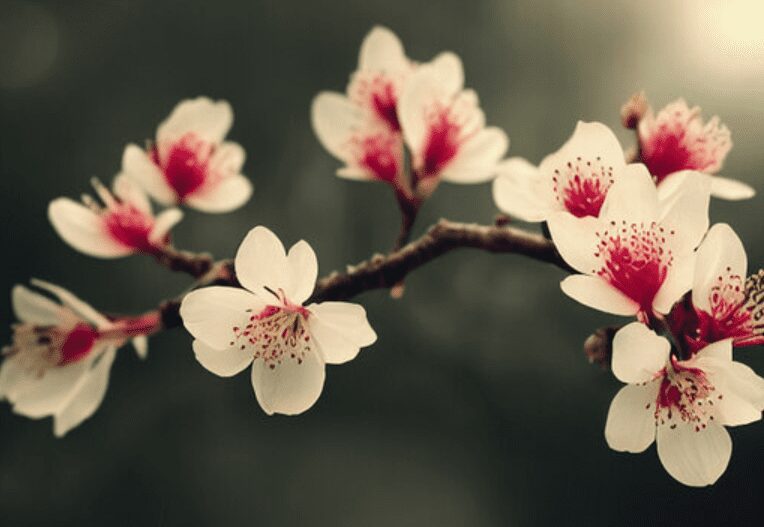What Is A Flowering Peach Tree
The ornamental flowering peach tree, also known as Prunus persica, is a cultivar of the peach tree bred explicitly for its beautiful blossoms and decorative features rather than for fruit production.
People prize these trees for their vibrant pink or white flowers, which typically bloom in early spring before the foliage appears. The flowers can be single, semi-double, or double, creating a stunning display in gardens and landscapes.
Ornamental peach trees are relatively small, usually reaching 15-25 feet, making them suitable for small gardens and urban landscapes.
They have a moderate growth rate and require well-drained soil and full sunlight to thrive. Like other fruit trees, they are susceptible to various pests and diseases, so monitoring their health and taking appropriate preventative measures is essential.
Besides their beauty, ornamental peach trees can also provide a habitat for birds and beneficial insects. While they do not produce large, edible fruits like their counterparts, some may still produce small, hard fruits that are not typically consumed by humans but may be eaten by wildlife.
A flowering peach tree is a beautiful addition to any garden or landscape. It produces fragrant pink or white blossoms in the spring and edible peaches in the summer.
9 Steps To Growing Flowering Peach Tree
Growing a flowering peach tree requires some care and attention, but it is not too difficult if you follow these steps:
1. Choose a suitable location for your tree.
Flowering peach trees need full sun and well-drained soil. They also prefer slightly acidic soil with a pH of 6.0 to 6.5. Avoid planting your tree near buildings, power lines, or other trees that may compete for space and nutrients.
2. Select a healthy sapling from a nursery or garden center.
Look for a tree with a sturdy trunk, healthy branches, and no signs of disease or pests. You can also choose a variety that suits your climate and taste preferences. Some popular types of flowering peach trees are ‘Red Baron’, ‘Pink Cascade’, and ‘Double Jewel’.
3. Plant your tree in the spring or fall, when the weather is mild, and the soil is moist.
Dig a hole that is twice as wide and as deep as the root ball of your sapling. Loosen the soil around the hole and mix in some organic matter, such as compost or manure. Place your sapling in the center of the hole and spread its roots gently. Fill the hole with soil and water thoroughly.
4. Water your tree regularly, especially during the first year of growth.
Keep the soil moist but not soggy. You can use a drip irrigation system or a soaker hose to provide consistent moisture. Avoid watering your tree’s leaves or trunk, which may cause fungal diseases or rot.
5. Fertilize your tree once a year, in early spring, before the buds open.
Use a balanced fertilizer specially planned for fruit trees, such as 10-10-10 or 12-12-12. Follow the instructions on the label and apply the fertilizer evenly around the base of your tree. Do not over-fertilize your tree, which may cause excessive growth and reduce fruit quality.
6. Prune your tree annually in late winter or early spring before the buds open.
Pruning helps to shape your tree, remove dead or diseased branches, and improve air circulation and light penetration. Use sharp and clean pruning tools and make clean cuts at an angle.
Remove any branches that are crossing, rubbing, or growing inward. Cut back any branches that are too long or too thick.
7. Protect your tree from pests and diseases.
Flowering peach trees are susceptible to various insects and fungi that can damage their leaves, flowers, fruits, and wood. Some common pests and diseases are aphids, borers, scale insects, leaf curl, brown rot, and peach scab.
You can prevent or treat these problems by using cultural methods, such as mulching, weeding, watering, pruning, and removing infected parts.
You can also use organic or chemical pesticides and fungicides if necessary, following the instructions on the label.
8. Harvest your peaches when they are ripe and ready to eat.
You can tell if your peaches are ripe by color, aroma, and firmness. They should have a yellow or orange background with a red blush.
They should smell sweet and fruity and feel slightly soft when gently squeezed. You can pick your peaches or use a fruit picker tool to reach higher branches.
9. Enjoy your peaches fresh or store them for later use.
You can eat your peaches raw or use them in recipes such as pies, jams, salads, smoothies, and ice cream.
You can also freeze, dry, or can your peaches to preserve them for more extended periods.
Conclusion
In conclusion, ornamental peach trees are a stunning addition to any garden or landscape, offering vibrant and eye-catching blossoms in the early spring. Their manageable size and moderate growth rate make them an excellent choice for small gardens and urban settings.
Although they are primarily cultivated for their visual appeal, these trees also provide habitats for birds and beneficial insects. To ensure their health and longevity, it is crucial to provide proper care, including well-drained soil, full sunlight, and regular monitoring for pests and diseases.
Ultimately, ornamental peach trees can elevate the beauty and biodiversity of any outdoor space.























